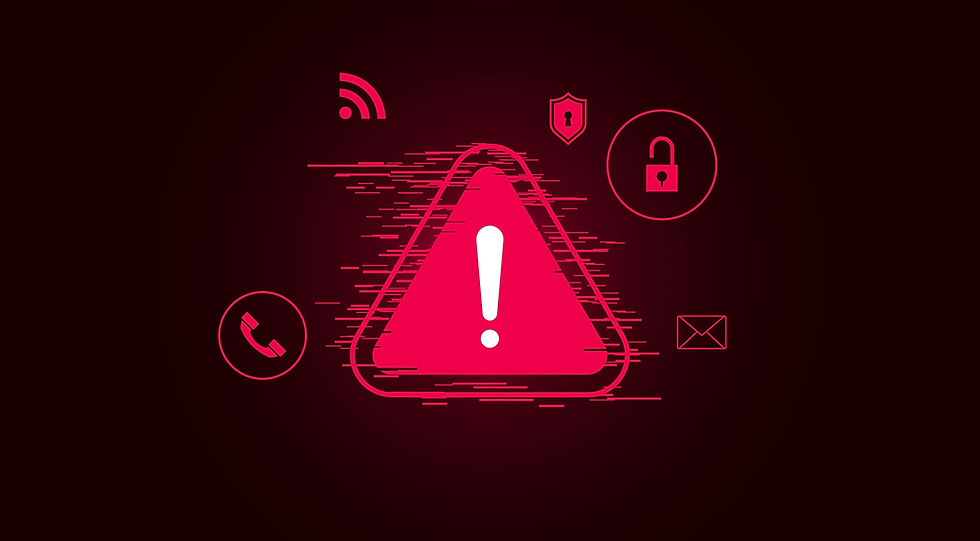Zero Trust and GRC: Why Access Control is Critical for Compliance
- Joel Proulx
- Apr 16
- 3 min read

The modern regulatory landscape requires using zero-trust security and other advanced tactics. Organizations must scrutinize access control policies while following governance, risk and compliance (GRC) requirements. How can your team follow regulatory frameworks and implement a zero-trust architecture?
How Zero-Trust Security Assists GRC Requirements
Zero-trust frameworks help organizations meet GRC requirements by implementing a robust security apparatus. Using this strategy means distrusting each end user and validating identities before saying yes to requests.
While firewalls and IDS systems worked well in the past, they don’t meet modern requirements like zero trust does. Present-day models see more cloud service adoption and remote work, so stricter protocol is necessary.
Zero trust overcomes these pitfalls by discarding any implicit trust. Every user must authenticate themselves and have authorization to access resources, thus reducing insider threats. Identity governance is essential to preventing cybercrime, which cost Americans $12.5 billion in 2023.
Access control policies like zero trust are also essential when complying with the following regulatory frameworks:
HIPAA: HIPAA mandates the integrity of patient data, so zero trust allows authorized healthcare professionals to see only the information necessary for the job.
NIST: Zero trust follows NIST requirements by detecting and responding to threats regarding assets and data flows.
ISO 27001: ISO 27001 has strict security standards, so implementing zero trust is essential to protect data, respond to incidents and ensure compliance auditing.
SOC 2: SOC 2 reports demonstrate a company is trustworthy for hosting. Zero trust complies with SOC 2 requirements by validating data and performing integrity checks.
What Principles Are Needed for Zero Trust Security?
Zero trust systems rely on a few principles for sound security and compliance. First, cybersecurity professionals insert least privilege access and role-based access control to allow only the necessary permissions for each user. While granular, they heighten security and reduce the risk of internal threats.
Continuous authentication and monitoring are requirements for zero-trust architecture. These strategies ensure resources are only open to authorized users and a quick response occurs otherwise. Your enterprise can implement behavior biometrics, multi-factor authentication and device posture to verify integrity.
Zero trust is also vital for compliance auditing because it improves accuracy. Traditional systems have limited scope, but zero trust can track every request and the resources the user accessed. Cybersecurity professionals can understand the user’s identity, location, device posture and other critical information.
How Zero Trust Affects Risk Management
Zero trust security provides more peace of mind because it reduces the number of attack surfaces. Continuous verification and no implicit trust mean your brand is safer from outside threats aiming to steal sensitive information. When you increase access control, the overall risk exposure of your website decreases.
Active management is essential to successful cybersecurity audits, so zero trust architecture provides a more dynamic apparatus. This security approach can react in real time to application behavior and user identities, thus strengthening a business’s infrastructure.
Policy enforcement is another critical pillar of zero trust, considering much of it is automated. AI-powered security protocols automatically detect and react to compliance breaches, lessening the burden on cybersecurity teams. Zero trust also benefits enforcement through real-time security updates when threats rapidly emerge.
How Organizations Can Integrate Zero Trust Into Their GRC Strategy
Organizations should incorporate zero trust security into their existing GRC strategies, though the transition must be sound. Here are a few tips for integration:
Understanding compliance: First, cybersecurity professionals should understand the specific regulations they need for compliance — such as HIPAA or NIST — and where the gaps exist.
Implementation plan: Leaders must develop a plan for implementation, including the required steps, most critical assets and areas with the highest risk.
Access control policies: A cornerstone of zero trust is determining who can access which resources and for how long.
Incident response: If an incident arises, there must be a rapid response plan to mitigate losses.
Employee education: Cybersecurity leaders must educate employees on zero-trust principles and maintaining compliance.
Process improvements: Once implemented, enterprises should continue improving zero-trust controls and perform audits to discover vulnerabilities.
Using PremCom for a Robust Security Infrastructure
Incorporating zero-trust security principles into your GRC strategy is essential. This approach involves not trusting any user unless they authenticate their identity and validate the integrity of the cybersecurity apparatus. Organizations can and should embrace zero trust to comply with industry standards.
By partnering with PremCom, you can fortify your security apparatus and limit the liabilities of your network. From configuration to implementation, security services offer modern solutions to thwart sophisticated threats.



